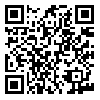BibTeX | RIS | EndNote | Medlars | ProCite | Reference Manager | RefWorks
Send citation to:
URL: http://irje.tums.ac.ir/article-1-5293-en.html
Background and Objectives : Health is the most common outcome in health research. In addition to the physician’s examinations as the gold standard, there are many questionnaires to assess objective and subjective health. One of the health indicators is the Self-Rated Health (SRH) which can evaluate health through one question. The use of this indicator is very easy and efficient therefore, it has become very common in health research. In this review, the biases and controversies in the interpretation of the SRH have been elaborated.
Methods: In this narrative review, Medline and Iran-Med databanks were searched using self-rated or self reported health in the title in December 2013. The titles and abstracts of 1106 article were assessed and 106 articles were recognized as relevant articles. Some of the references of these articles were assessed and 16 articles were added to the list of relevant articles.
Results: There are different types of the SRH questions five or seven item questions, and comparative or non-comparative ones. However, the findings of these types of questions are similar and none is preferred over the others in the literature. On the other hand, the validity of this indicator is not similar in different socio-economic and ethnic groups. Thus, the estimated health difference between these groups is rated with bias.
Conclusion: T his question still works in the research and clinical setting evaluations. The main point is paying attention to the socio-economic and cultural status of the study groups in SRH interpretation.
Received: 2015/03/16 | Accepted: 2015/03/16 | Published: 2015/03/16
| Rights and permissions | |
 |
This work is licensed under a Creative Commons Attribution-NonCommercial 4.0 International License. |





